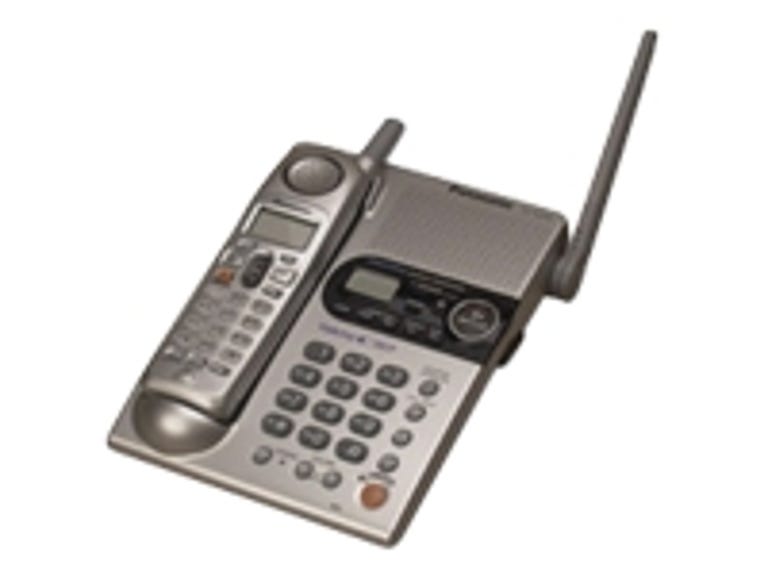 Why You Can Trust CNET
Why You Can Trust CNET Panasonic KX-TG2356S review: Panasonic KX-TG2356S
Sure, you can talk on a phone, but how about a phone that talks to you? Panasonic's KX-TG2356 is a 2.4GHz cordless phone system that voices caller-ID info. Read our review for more.
In the sea of cordless phones, it's essential that the candidates distinguish themselves from the masses. Panasonic has been in the water for a while, and although its $99 KX-TG2356S 2.4GHz digital cordless answering system isn't spectacular overall, it has a number of redeeming features that will appeal to some users. Notably, the phone's ample buttons and talking caller-ID capability make it appropriate for those with less than perfect vision.
At 8 by 6 inches, the KX-TG2356S's base takes up more room than we'd like; however, its speakerphone and large, ergonomically placed buttons make up for the hefty footprint. The receiver, which measures 6.5 by 1.8 by 1 inches, isn't bulky as handsets go, though it feels heavier than it needs to be. Heft isn't always a disadvantage, however, as the keypad is amply spaced, and the numbers are large enough that you can easily read them. The keys' green backlight further increases this visibility. Above the number pad, you'll find the Talk and End buttons, which are slightly recessed; we're assuming this helps one avoid accidentally hanging up when cradling the handset--a nice touch. In addition, you'll find an orange speakerphone key, a menu button, and two keys for navigating through menu functions (such as the phone book) on the backlit LCD. Amid them all is a large volume rocker, which also scans and adjusts menu options in addition to controlling sound during a call; the ringer volume is accessed through the menu.
The Good
The Bad
The Bottom Line
The KX-TG2356S has a good range of features, although it's missing a handset-expansion option, as is available in the KX-TG2357 model, as well as multiline capabilities. Among the system's more standard offerings are a 50-entry phone book, selectable ring tones, caller ID (for subscribers), and full-duplex speakerphones on both the handset and the base. Two features, however, really distinguish the KX-TG2356S. The first is caller IQ, which lets you download information such as weather reports, horoscopes, sports scores, and ringer melodies to the phone from OpenLCR, a site dedicated to providing such information; free registration is required. The second standout is talking caller ID (subscription is necessary), which speaks the name of the caller if they're from an area where name display service is available. If not, the digital voice (which can be set up to come from the base, the handset, or both) states, "Number available," "Call from out of area," "Call from private caller," or "Call from long distance;" you can also turn off the option. We have to admit this is a nice luxury, especially for those who are afflicted with poor vision or are just plain lazy. Panasonic also includes less technical extras, such as a belt clip and a highly appreciated shoulder-cradle attachment.
In all, the Panasonic KX-TG2356S performed decently in our tests. We wandered more than 150 feet from the base before the signal broke up, and we experienced little to no interference, even when wandering through a Wi-Fi-heavy building. Sound quality, however, was disappointing: calls sounded tinny and always had a slight echo. The phone redeemed itself slightly with its above-average battery life. We eked out 7 hours of talk time, and as of this writing, the phone was 13 days off the hook and still alive (rated times are 5 hours and 11 days, respectively).
